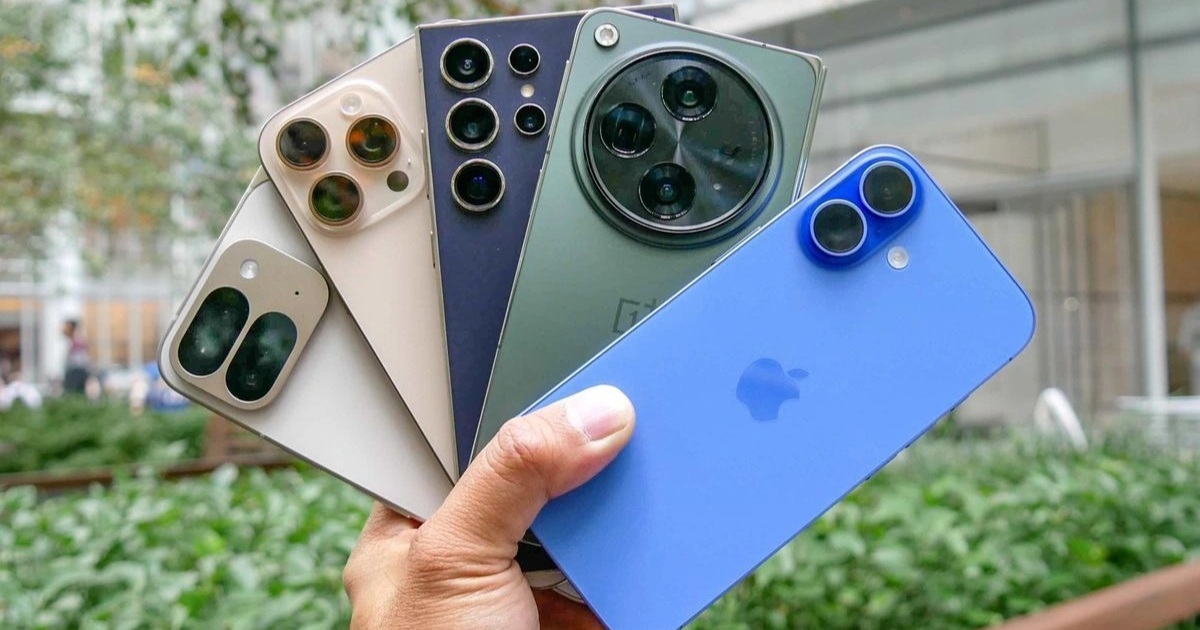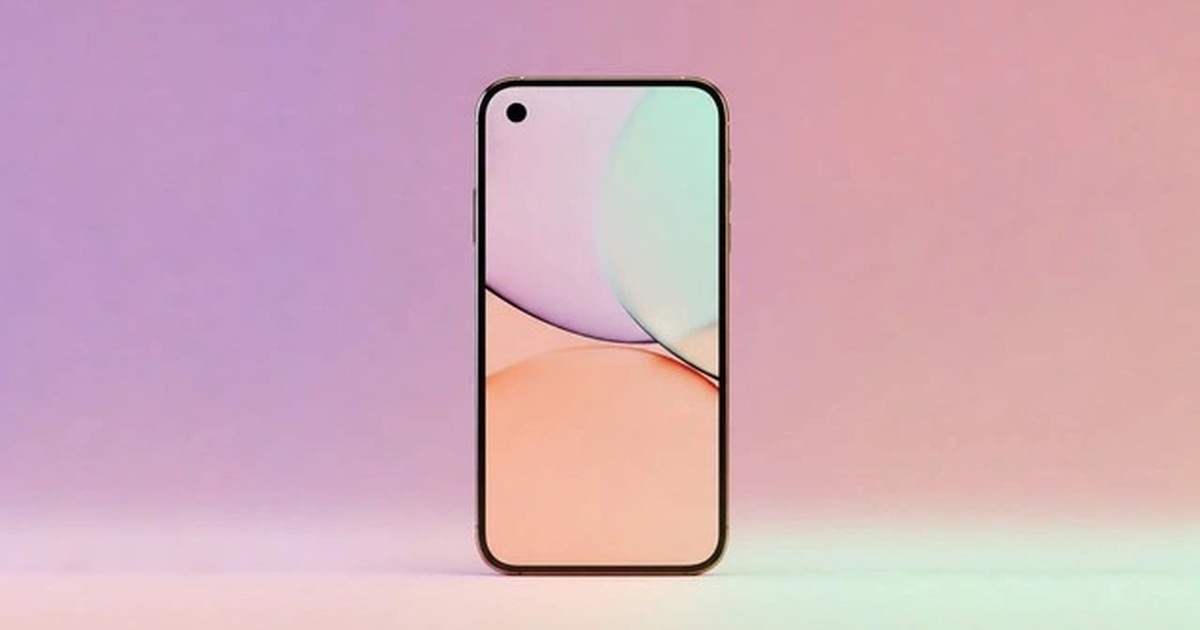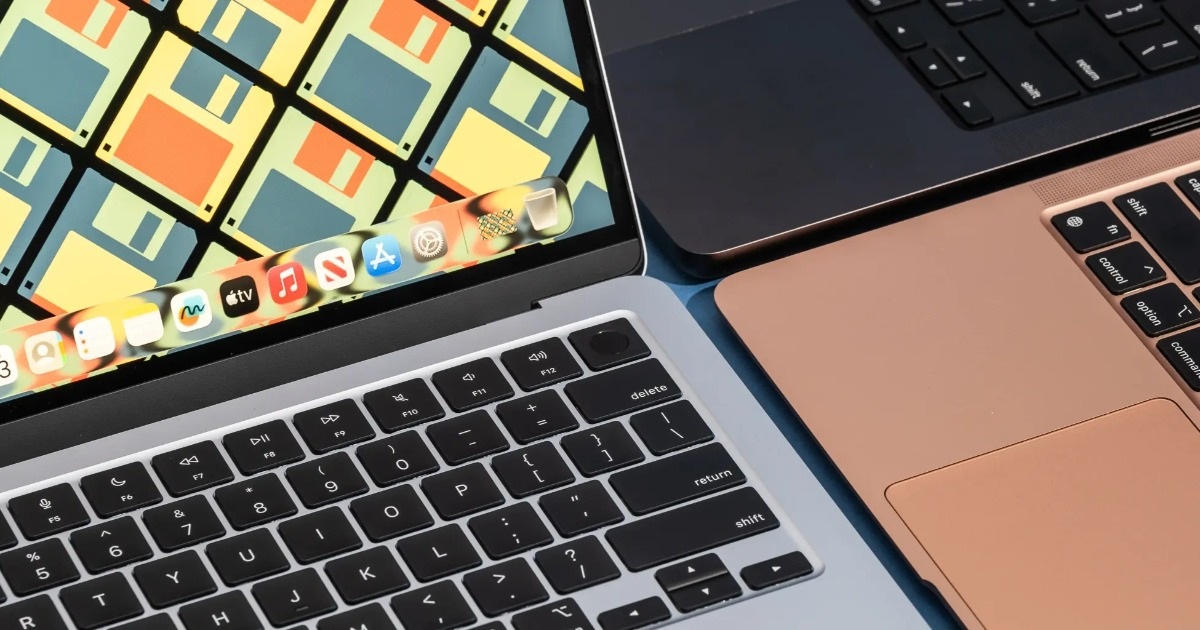The year 2025 promises to be a landmark for the mobile industry with the introduction of numerous high-end smartphones from leading brands. These devices not only bring significant advancements in design, displays, cameras, and battery life but also set new technology trends, catering to every user’s needs.
iPhone 17: A Leap Forward in Technology
The design of the iPhone 17 Pro Max is likely to remain unchanged from its predecessor (Photo: MacRumors).
Apple continues to lead the way with the iPhone 17 lineup, which includes four models: iPhone 17, iPhone 17 Air, iPhone 17 Pro, and iPhone 17 Pro Max. Among these, the iPhone 17 Air is a brand-new model expected to replace the iPhone Plus line.
Key highlights on the iPhone 17 Pro and Pro Max include the Low-Dielectric TEE display technology, which improves battery efficiency and overall durability. Additionally, Apple plans to incorporate metalens technology into the Face ID system, shrinking the Dynamic Island and expanding screen space.
Standard versions of the iPhone 17 may get an upgrade to high refresh rate screens, though it’s unclear whether this will be 90Hz or 120Hz. This will undoubtedly provide users with a smoother experience.
A render of the iPhone 17 Air with its slim design (Photo: Apple Insider).
Notably, Apple is developing its own WiFi 7 and 5G chips, reducing reliance on external suppliers. This strategic move aims to optimize costs and enhance profitability.
Galaxy Z Fold7 and Galaxy Z Flip7: The Pinnacle of Foldable Displays
The Galaxy Z Fold7 features a larger outer display (Photo: Thế Anh).
Samsung solidifies its position as a pioneer in foldable smartphones with the Galaxy Z Fold7 and Galaxy Z Flip7. Both models offer enhanced screen sizes, providing larger display areas and better battery performance.
The Galaxy Z Fold7 has a 6.5-inch outer display and an 8-inch foldable screen, while the Galaxy Z Flip7 features a 6.85-inch foldable screen and a 4-inch outer display. These size upgrades improve user experience and maintain Samsung’s competitive edge.
Both models are equipped with the Snapdragon 8 Elite chipset, ensuring powerful and stable performance. The Galaxy Z Fold7 also supports the S Pen, ideal for content creators.
The Galaxy Z Flip7 is thinner compared to its predecessor (Photo: Thế Anh).
Xiaomi 15 Ultra: Professional-Level Camera on a Phone
Xiaomi 15 Ultra showcases a professional-grade camera setup on the back (Photo: GSMArena).
The Xiaomi 15 Ultra impresses with its professional camera system, featuring a main 50MP 1-inch sensor, a 50MP ultra-wide lens, and a 50MP telephoto lens with 3x optical zoom. It collaborates with Leica to optimize image quality.
In terms of specifications, the Xiaomi 15 Ultra uses the Snapdragon 8 Elite chipset, runs HyperOS 2.0, and has a 6000mAh battery. It supports 90W wired fast charging and 50W wireless fast charging, ensuring extended usage.
Oppo Find N5: The World’s Thinnest Foldable Smartphone
The Oppo Find N5 is set to become the world’s thinnest foldable smartphone (Photo: CNet).
The Oppo Find N5 is a strong contender in the foldable smartphone market, boasting a thickness of just 4mm when unfolded—potentially the thinnest foldable phone at launch.
Equipped with the Snapdragon 8 Elite chipset, 16GB of RAM, and up to 1TB of internal storage, the Find N5 features a 6.4-inch outer display and an 8-inch foldable screen with 2K resolution and 120Hz refresh rate. It houses a 5700mAh battery that supports 80W fast charging and advanced silicon-carbon battery technology.
Conclusion
2025 will mark a significant turning point in the mobile industry with the arrival of groundbreaking devices like the iPhone 17, Galaxy Z Fold7, Xiaomi 15 Ultra, and Oppo Find N5. Each product brings innovative improvements in performance, design, photography, and battery life, meeting all user needs. Stay tuned for updates on these exciting smartphone releases!
Source: Dân Trí



